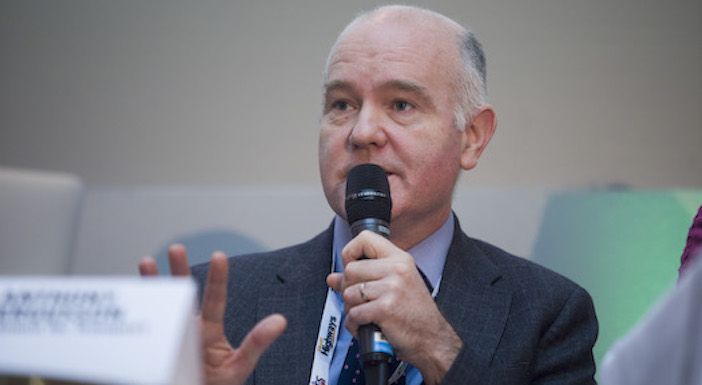Gathered industry leaders at the ITS (UK) Annual Summit earlier this week (November 27) agreed that road authorities should be looking to build on and improve practices that encourage a wider diversity of technology, as well as promoting success stories in an attempt to encourage future investment.
In a debate chaired by ITS (UK) communications manager Paul Hutton, gathered ITS luminaries were charged with answering the question: Why are exciting technologies presented at ITS events not always implemented to improve mobility?
“It’s about overcoming budget pressures, working out which problems to solve in which order and piecing together funding from different sources,” said Anthony Fergusson (above), deputy director for traffic and technology at the Department for Transport. “Also building a business case and gathering evidence which allows you to know what the impact of doing something will be, because if you don’t, it will be very hard to justify it to the public.” The role of government, he said, was to advise and support agencies in making the right investment decisions.
“It’s often a bumpy road and very difficult to make a business case,” said Glynn Barton, director of network management at Transport for London (TfL). This is particularly true when seeking approval for new technologies within costly road-building or construction projects, he added – but it is helpful if the case for innovation can be pinned to something which people readily understand, such as clean air. Barton later emphasised a need to nurture smaller companies through the risks involved in trying to become a sustainable supplier. TfL, he said, has also become adept at encouraging its supplier base to collaborate with each other, fostering new ideas.
Karla Jakeman of Innovate UK also put the case for small and medium-sized enterprises (SMEs), arguing that they often have innovative ideas but are unable to access the marketplace. She highlighted the importance of innovation partnerships with larger entities and design competitions, eleven of which are currently offering the chance of substantial funding to SMEs in the UK but remain undersubscribed. ‘Premier’ authorities with a reputation for proactive implementation could helpfully link up with less confident authorities, Jakeman suggested, while Innovate UK works actively with authorities wanting to innovate but unsure of the next step.
With 154 separate highway authorities currently operating in the UK, the desire for a less fragmented approach to national mobility priorities and the need for greater pooling of knowledge about available technologies were recurrent themes. Anthony Fergusson emphasised the potential dividends of centralised thinking on issues such as data standards and parking. “These are big, messy subjects,” he said, “but if you get it right, everybody benefits.”
“Taking part of your budget and spending it on future technologies will be a political struggle,” said Kirk T. Steudle, former director of Michigan DOT. “The ability to move forward depends on the political structure. Will they allow you to fail – go forward – and learn? Or do you sit over a trapdoor – one mistake and you’re gone? It takes a long time to build political capital.” Steudle also stressed the need to make a noise about innovations which succeed. “When everyone at an ITS conference does their job well, the public don’t notice,” he said. “We have to talk about successes.”
By Jack Roper





